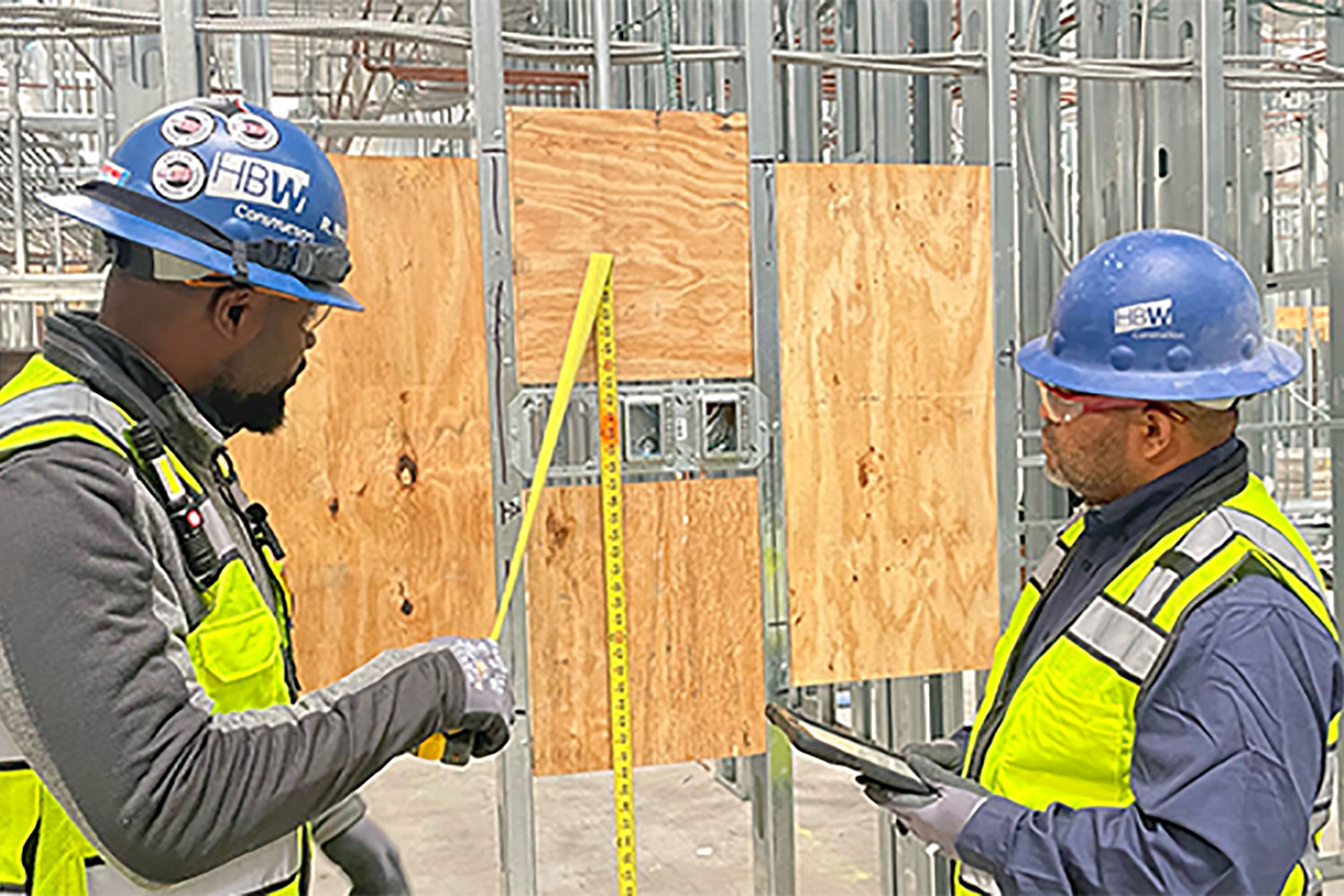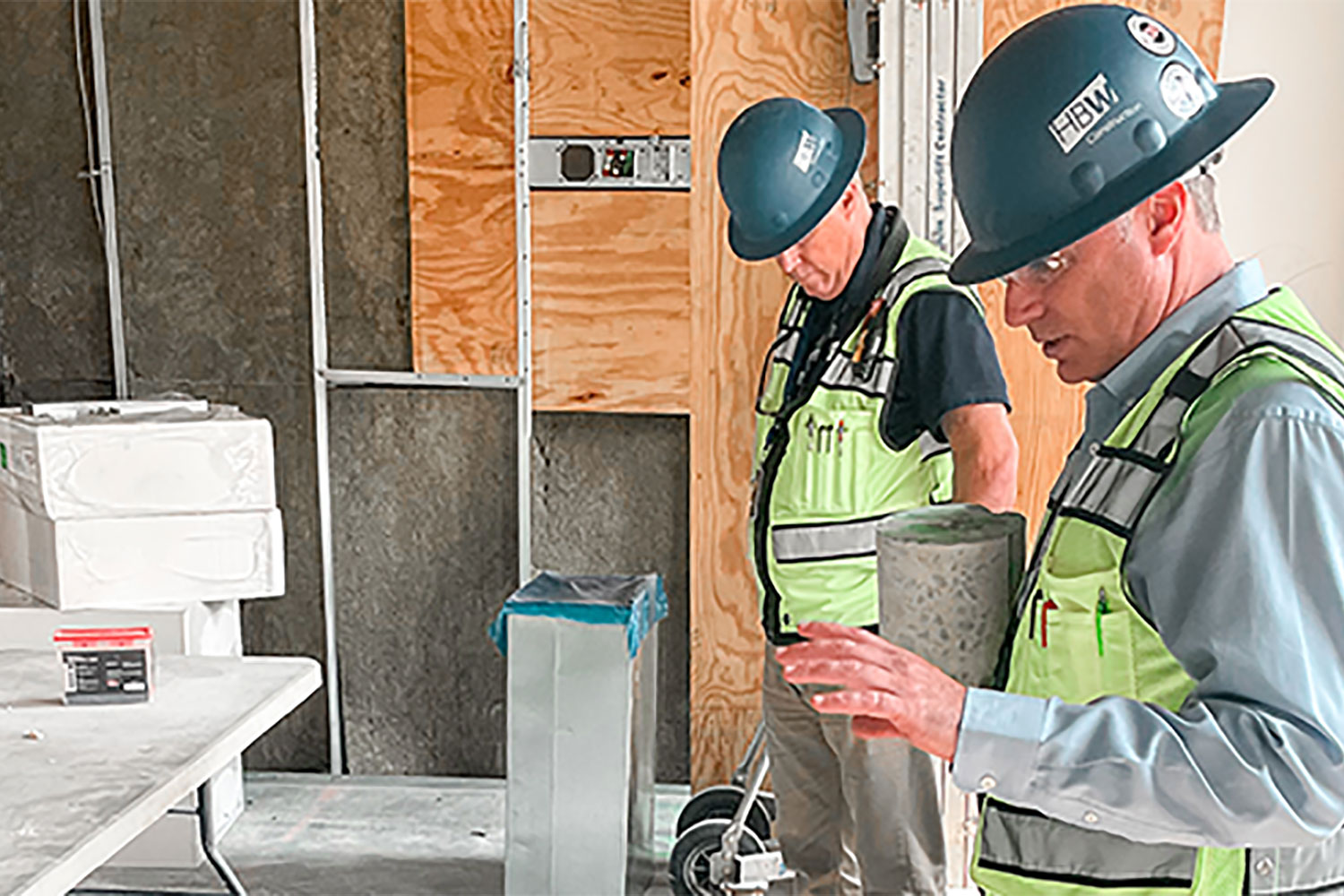Over several years of transforming the construction project schedule to be focused on the client, HBW Construction has gained strong buy-in from general contractors, subcontractors and clients for a zero punch list process. There are many important advantages to this process, including:
- A focus on quality work throughout the project
- Happier clients on the final walk-through
- Timely project turnover
- Less time and money spent on crew return visits
- More profitable projects
Zero Punch List Process
The phrase “punch list” comes from the antiquated process of punching holes in a list to mark items that need fixing. The modern punch list includes items that do not conform to contract specifications or items that were damaged during the construction process. It can also include items that were incorrectly installed or not functioning as promised.
Historically, the client or project owner had significant responsibility for identifying punch list items and communicating them to the general contractor. The general contractor then communicated punch list items to project partners and subcontractors, who then scheduled any needed crews to fix and check off the items. This all happened toward the end of a project.
If quality control was handled well throughout the project, punch lists only included small fixes the client identified during the final punch list walk-through. But over time a punch list became a catch-all for all kinds of project problems, leading to construction project schedule delays, extra expense and unhappy clients.
Alternatively, a zero punch list process anticipates any final fixes and takes that burden off the client. Our aim is to surpass client expectations during the final walk-through and reveal our best work.
How do we achieve the zero punch list? First, we hold weekly project meetings to address scheduling progress, workmanship, missing materials or clean-up issues. These weekly meetings occur throughout the project with subcontractors and the client. We are on site with the client, or we do weekly virtual walk-throughs and progress reports by video. Any issues identified during these weekly progress meetings are fixed on the spot.
If we are experiencing supply chain issues, we try to anticipate delays and work them into the project schedule or suggest alternative materials to keep the project moving forward with all items in place. Our goal is to avoid delays in key materials that would prevent us from turning over the project to the client on time.
As the project nears completion, we schedule our final client walk-through. A unique aspect of our zero punch list is that subcontractors have crew members on site for the final client walk-through. This has become standard on projects that we manage.
Before the client arrives for the walk-through, we take out our blue tape. We walk the project ourselves and note any final paint or trim touch-ups and address any final clean-up needs.
Exceeding Client Expectations
When the client arrives, blue tape is evidence of minor scratches or dings we have already identified. Crews on site will follow behind us and fix these items the same day of the walk-through.
Our zero punch list walk-through is transformed into a reveal party. We highlight design features. We let the client test the lighting and try out the appliances. If we followed our process well, we should only hear positive comments and excitement from the client about moving into the new space.
When our entire project team is focused on attention to detail and quality, the client is not left responsible for pointing out sawdust, loose screws or paint dings. We want to avoid the expense of punch list work beyond the original construction project schedule. Most importantly, we want to create long-term client satisfaction.
The zero punch list not only keeps clients happy on a single project, it also often results in repeat work. Through our weekly project walk-throughs and communications, our subcontractor collaboration and our trusty blue tape, we offer a new standard for construction quality.
View Our Work




Comments